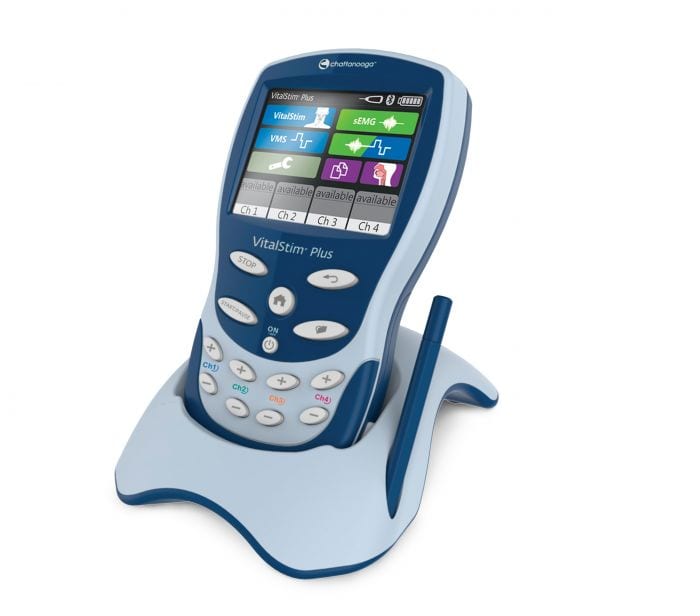
While true numbers are hard to pin down, approximately one in 25 adults experiences some form of dysphagia annually.* A range of disorders that affects the upper digestive tract from the oral cavity to the gastroesophageal junction, some forms of dysphagia can be treated by a speech-language pathologist. Others call for more aggressive treatment, with neuromuscular electrical stimulation (NMES) equipment like VitalStim showing particular promise.
What is NMES?
Neuromuscular electrical stimulation is long-established in physical therapy equipment. It uses electrical impulses to stimulate nerves in targeted muscle groups. This stimulation functions in much the same way as the brain sends signals to muscles; the resultant contractions promote motion and strength. In this way, muscles that have atrophied, or that require a degree of “training” to restore normal range of motion and function, can be restored.
Uses of NMES
Neuromuscular electrical stimulation is used in a number of treatment modalities, finding use in sports medicine (for the regeneration and maintenance of muscle tissue), stroke and spinal cord injury, chiropractic treatment, and various forms of physical therapy. Because each muscle group that can be targeted by NMES responds to different degrees of electrical stimulus (and because those muscles can be surrounded by other tissue), specialized equipment is called for.
Causes of Dysphagia
Dysphagia is partial or full paralysis at one or more points in the swallowing process. Affected individuals may have difficulty swallowing, experiencing coughing or choking; they may, alternately, not be able to swallow at all. Traumatic brain injury, side-effects of surgery, or the use of a breathing tube, spinal cord injury, and degenerative disorders like Parkinson’s, ALS, and achalasia can cause varying degrees of dysphagia.
NMES Treatments for Dysphagia
Dysphagia takes a physical and emotional toll on patients and their families. In order to prevent malnutrition, some patients will require an uncomfortable feeding tube. The interference with everyday life and social activities further causes financial burden, depression, and other issues. VitalStim assists in managing — and, in some cases, reversing — these effects, and helping patients return to some semblance of normalcy.
How VitalStim Works
VitalStim can deliver electrical stimulation on as many as four channels simultaneously. You can adjust treatments by changing frequency, duration, and sequencing that is customized to the individual’s needs, and use sEMG biofeedback to monitor progress. The device is Bluetooth-enabled and includes a suite of educational videos, a knowledge bank, and software that tracks and reports patients’ progress.
Effectiveness of NMES Treatments
NMES treatment is not “one and done.” Just as muscle function and tone can be lost by degrees, so too must they be restored gradually. This often requires a team approach, with the treatment modality implemented by an SLP working in tandem with the patient’s general practitioner, physical therapist (who administers the NMES), and other specialists, like a neurologist, where applicable. Function returns with time, patience, and hard work, with the prognosis varying based on the nature of the patient’s condition.
NMES and Insurance
To date, VitalStim is the only FDA-cleared NMES dysphagia treatment. As such, and because it is indicated for etiologies other than mechanical causes that would require surgery, it’s covered by most insurance.
Call to Order VitalStim NMES
You may be wondering how your patients can benefit from VitalStim, and how to get started using this treatment in your practice. For answers to these and other questions, contact Great Lakes Imaging for solutions tailored to your needs.
*American Speech-Language-Hearing Association, Adult Dysphagia
